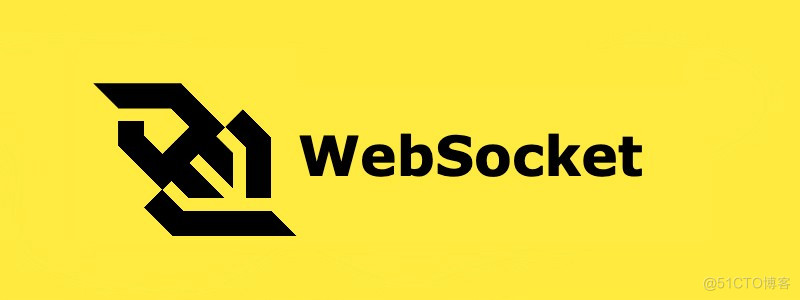基于 Go 语言开发的监控系统
基于 Go 语言开发的监控系统

01
介绍
小米开源的监控系统 open-falcon 和滴滴开源的日志采集工具 falcon-log-agent 作为一组黄金搭档,被互联网公司广泛使用。
本文介绍怎么使用这组黄金搭档监控业务系统的日志。
02
open-falcon
open-falcon 使用 Golang 和 Python 开发,其中 Python 主要开发的是 Dashboard。
限于篇幅,本文不准备介绍 open-falcon 的原理,仅介绍如何安装。
安装 open-falcon 之前,必须确保已成功安装 Redis 和 MySQL,因为 open-falcon 需要使用这两个存储组件。
同时,我们还需要确保已成功安装 Golang 和 Python。
需要注意的是,我们还需要确保已设置 GOPATH和GOROOT 环境变量(也可以使用默认值)。
安装 open-falcon :
下载源码和初始化数据库
mkdir -p $GOPATH/src/github.com/open-falcon
cd $GOPATH/src/github.com/open-falcon
git clone https://github.com/open-falcon/falcon-plus.git
cd $GOPATH/src/github.com/open-falcon/falcon-plus/scripts/mysql/db_schema/
# 初始化数据库
mysql -h 127.0.0.1 -u root -p < 1_uic-db-schema.sql
mysql -h 127.0.0.1 -u root -p < 2_portal-db-schema.sql
mysql -h 127.0.0.1 -u root -p < 3_dashboard-db-schema.sql
mysql -h 127.0.0.1 -u root -p < 4_graph-db-schema.sql
mysql -h 127.0.0.1 -u root -p < 5_alarms-db-schema.sql
编译
cd $GOPATH/src/github.com/open-falcon/falcon-plus/
# make all modules
make all
# make specified module
make agent
# pack all modules
make pack
在执行 make pack 之后,我们得到一个压缩包 open-falcon-vx.x.x.tar.gz
如果我们想要修改每个模块的配置文件,在执行 make pack 之前,我们可以修改模块的 config/xxx.json
需要注意的是,模块的配置文件中,MySQL 的账号和密码,默认分别是 root 和空,如果我们的 MySQL 账号和密码与之不同,我们需要编辑模块的配置文件进行修改。
部署
我们可以将得到的压缩包解压缩到指定目录进行部署,例如:
make ~/open-falcon
tar -zxvf open-falcon-vx.x.x.tar.gz -C ~/open-falcon
启动所有模块
cd ~/open-falcon
./open-falcon start
# 检查模块状态
./open-falcon check
安装仪表盘
在安装 Dashboard 之前,我们需要先安装依赖项:
# Centos
yum install -y python-virtualenv
yum install -y python-devel
yum install -y openldap-devel
yum install -y mysql-devel
yum groupinstall "Development tools"
# Ubuntu
apt-get install -y python-virtualenv
apt-get install -y slapd ldap-utils
apt-get install -y libmysqld-dev
apt-get install -y build-essential
apt-get install -y python-dev libldap2-dev libsasl2-dev libssl-dev
安装 Dashboard:
cd ~/open-falcon
git clone https://github.com/open-falcon/dashboard.git
cd dashboard
virtualenv ./env
./env/bin/pip install -r pip_requirements.txt
需要注意的是,这里有一个 Bug,会导致无法在仪表盘注册账号(点击按钮无反应),需要将 falcon api 的端口号 18080 改为 8080。
cd ~/open-falcon/dashboard
vim rrd/config.py
# 端口 18080 改为 8080
API_ADDR = os.environ.get("API_ADDR","http://81.70.201.193:8080/api/v1")
在启动 Dashboard 之前,我们再检查一下 open-falcon 的 api 模块是否已启动:
cd ~/open-falcon
./open-falcon check
启动 Dashboard:
$ cd ~/open-falcon/dashboard
$ ./control start
在浏览器中,打开 http://127.0.0.1:8081。
03
falcon-log-agent
falcon-log-agent 不同于 ELK,它不是日志查看系统,而是日志计算系统。
它通过外挂式的日志采集方式,实时读取日志文件中的内容,实时计算,并将计算结果直接推送到 open-falcon。
它有几个限定条件,分别是要求日志必须包含时间,不支持文件软链接,日志时间必须有序。
安装 falcon-log-agent:
构建
make -p $GOPATH/src/github.com/didi && cd $_
git clone https://github.com/didi/falcon-log-agent.git
make build
修改配置文件
cd $GOPATH/src/github.com/didi/falcon-log-agent
cp cfg/dev.cfg cfg/cfg.json # 基础配置
cp cfg/strategy.dev.json cfg/strategy.json # 策略配置
部署
cd $GOPATH/src/github.com/didi/falcon-log-agent
make pack
mkdir ~/open-falcon/falcon-log-agent
tar -zxvf falcon-log-agent.tar.gz -C ~/open-falcon/falcon-log-agent
启动
cd ~/open-falcon/falcon-log-agent
./control start
检查
http://ip:8003/health健康检查http://ip:8003/strategt查看生效策略
策略配置示例:
本文以 open-falcon 的 agent 模块的日志为例,介绍怎么配置一个新策略。
[
{
"id":10, # 多个策略,id 必须唯一
"name":"agent send data count", # 对应 open-falcon 中的 metric(监控项)
"file_path":"/root/open-falcon/agent/logs/agent.log", # 日志路径(支持动态路径)
"time_format":"yyyy/mm/dd HH:MM:SS", # 时间格式
"pattern":"Total=(\\d+)", # 匹配正则表达式
"exclude":"", # 排除正则表达式
"step":60, # 日志采集周期,单位秒
"tags":{}, 对应 open-falcon 中的 tag
"func":"cnt", # 日志采集方式,cnt、avg、sum、max、min
"degree":6, # 精度
"comment":"", # 备注
"parse_succ":true
}
]
重启 falcon-log-agent,我们在 Dashboard 中的 Couters 列表中可以看到 agent send data count。
04
监控配置
我们介绍完 open-falcon 和 falcon-log-agent 的安装和启动。
已实现自动采集日志并将计算数据上报到 open-falcon,接下来,我们介绍针对日志数据怎么配置监控。
监控配置操作步骤:
- 创建用户组。
- 创建模板。
- 添加策略,其中 metric 对应 falcon-log-agent 策略配置文件中配置项的 name,max 是最大报警次数,P 是报警级别(<3:既发短信也发邮件,>=3:只发邮件),run 是策略生效时间(不填写代表全天生效),if 代表条件。
告警条件支持函数如下:
- all(#3) 最新 3 个点都满足阈值条件则报警。
- max(#3) 最新 3 个点,最大值满足阈值条件则报警。
- min(#3) 最新 3 个点,最小值满足阈值条件则报警。
- sum(#3) 最新 3 个点,其和满足阈值条件则报警。
- avg(#3) 最新 3 个点,其平均值满足阈值条件则报警。
- diff(#3) 将最新 push 过来的点(被减数),与历史最新 3 个点(减数)相减,得到 3 个差,有一个差满足阈值条件则报警。
- pdiff(#3) 将最新 push 过来的点(被减数),与历史最新 3 个点(减数)相减,得到 3 个差,再将 3 个差值分别除以减数,得到 3 个商值,有一个商值满足阈值条件则报警。
- lookup(#2,3) 最新的 3 个点中有 2 个满足阈值条件则报警。
- 配置报警接收用户组。
05
总结
本文我们介绍了基于 Go 语言开发的开源监控系统和日志采集工具的安装和使用方式。
建议读者朋友们动手操作一遍,需要注意的是,尽量严格按照本文的目录结构操作。
推荐阅读:
- Go 语言内存逃逸案例
- Golang 语言 vendor 在 GOPATH 和 Modules 中的区别
- Golang 语言中基础同步原语 Mutex 和 RWMutex 的区别
- Golang 语言中的非类型安全指针
- Golang 语言怎么实现访问流量限流?
参考资料:
- https://github.com/open-falcon/falcon-plus
- https://github.com/open-falcon/dashboard
- https://github.com/didi/falcon-log-agent
腾讯云开发者

扫码关注腾讯云开发者
领取腾讯云代金券
Copyright © 2013 - 2025 Tencent Cloud. All Rights Reserved. 腾讯云 版权所有
深圳市腾讯计算机系统有限公司 ICP备案/许可证号:粤B2-20090059 深公网安备号 44030502008569
腾讯云计算(北京)有限责任公司 京ICP证150476号 | 京ICP备11018762号 | 京公网安备号11010802020287
Copyright © 2013 - 2025 Tencent Cloud.
All Rights Reserved. 腾讯云 版权所有












